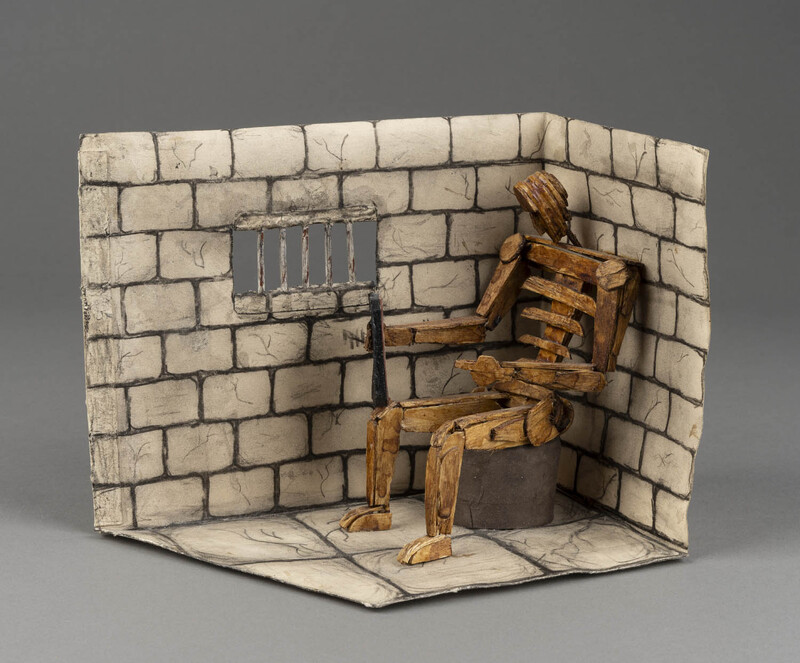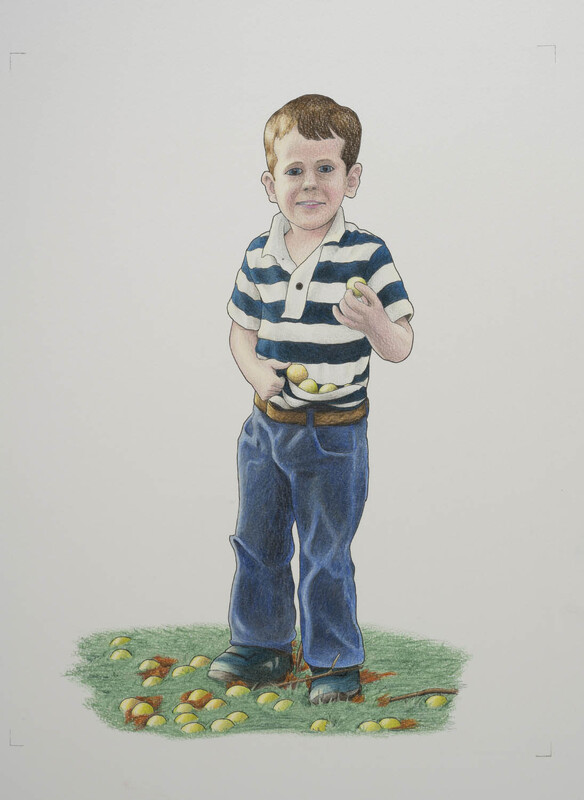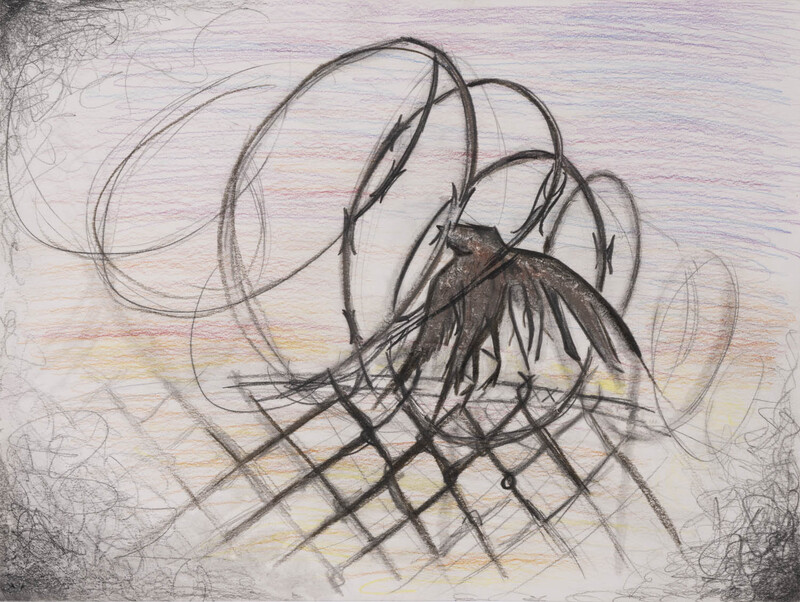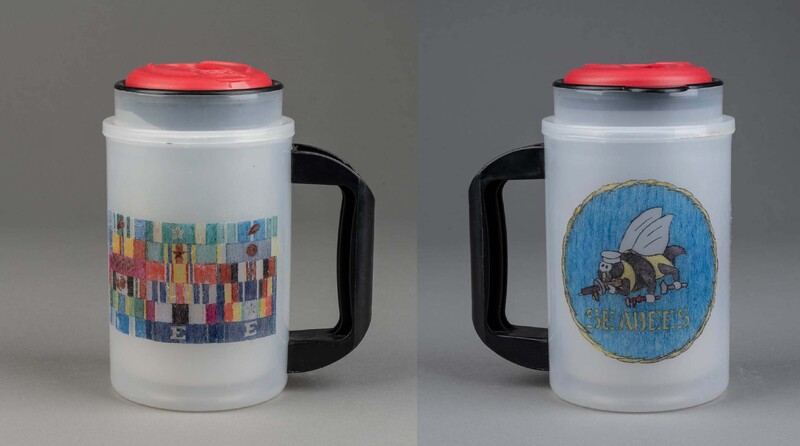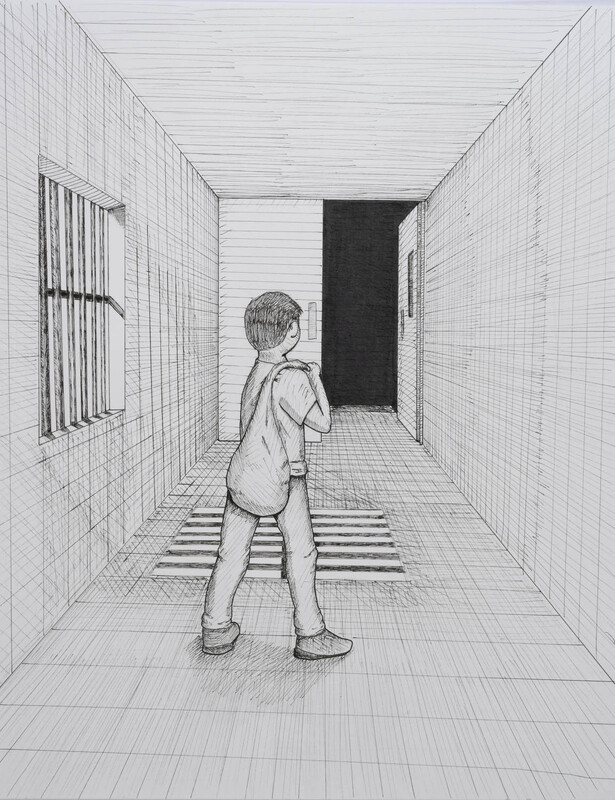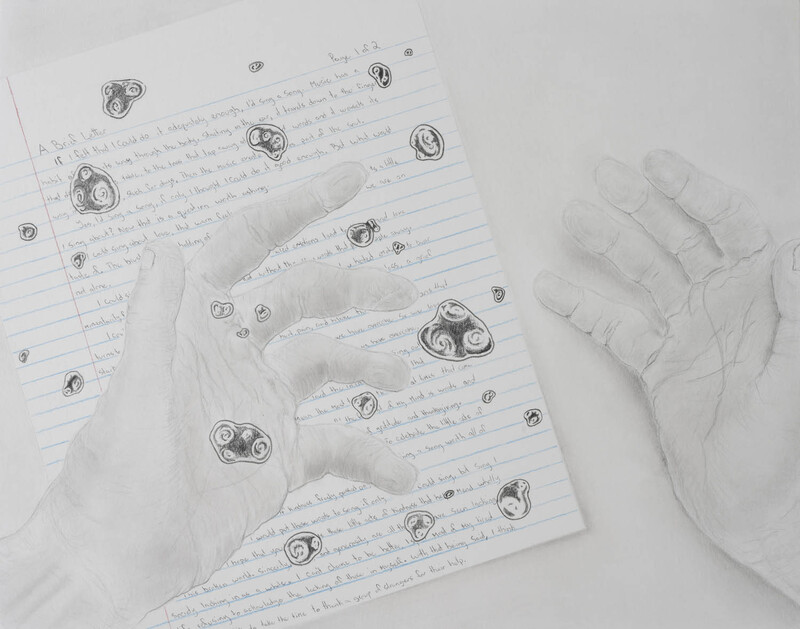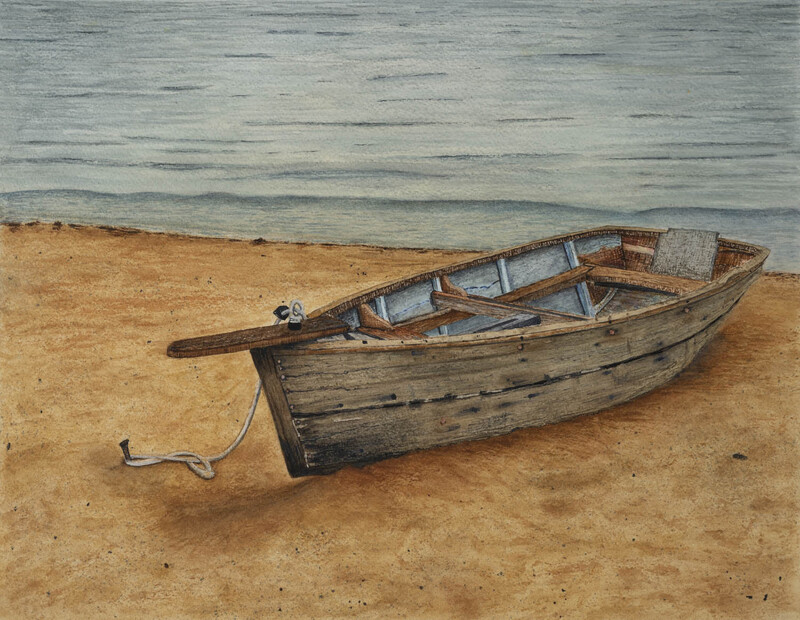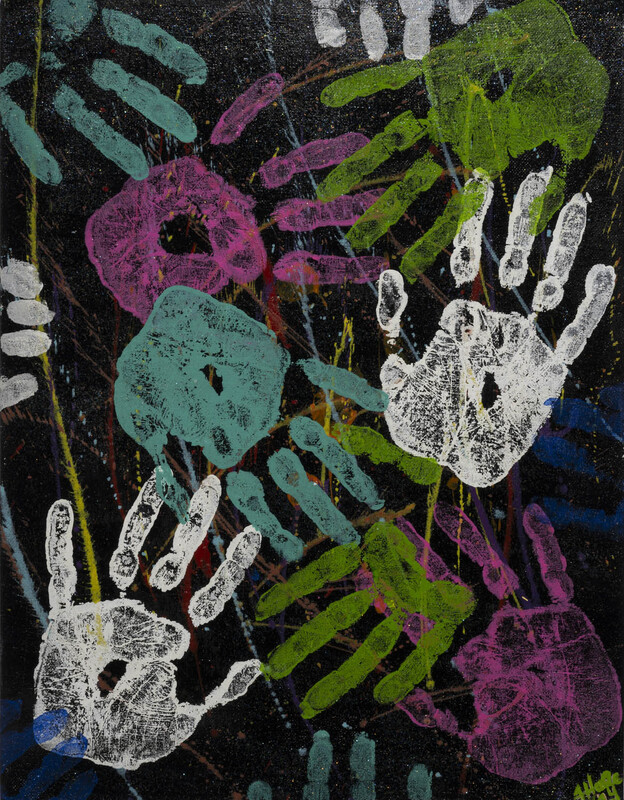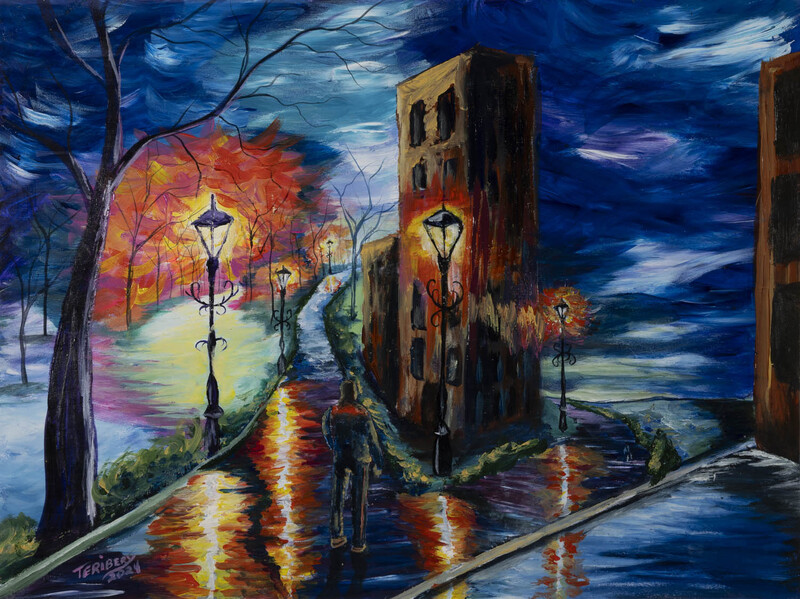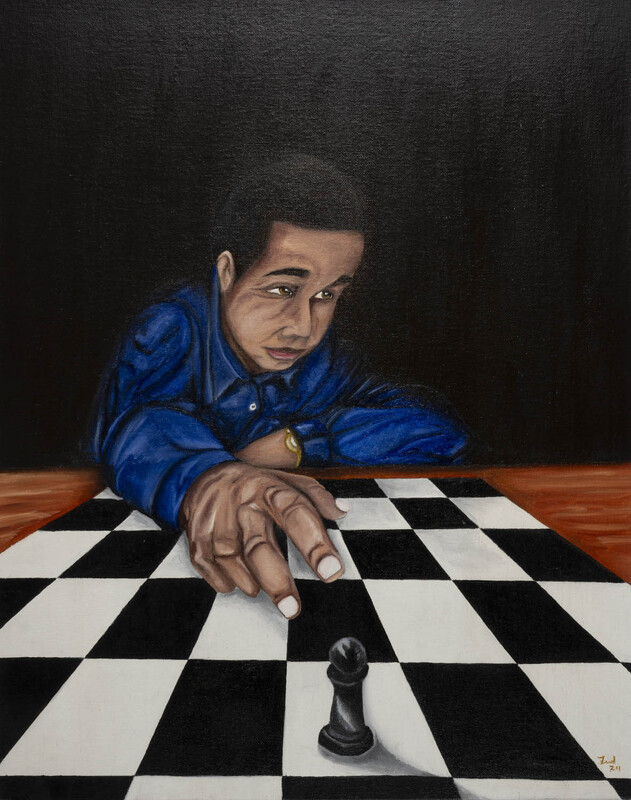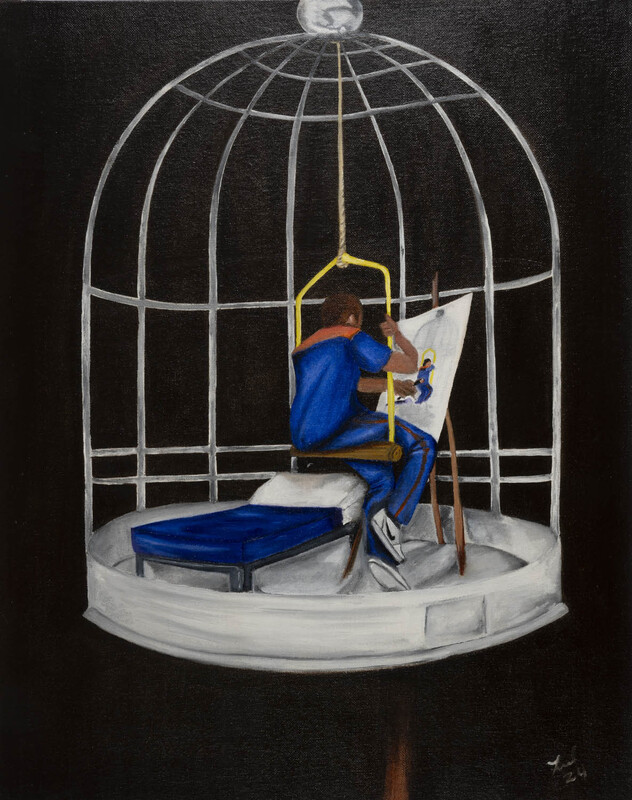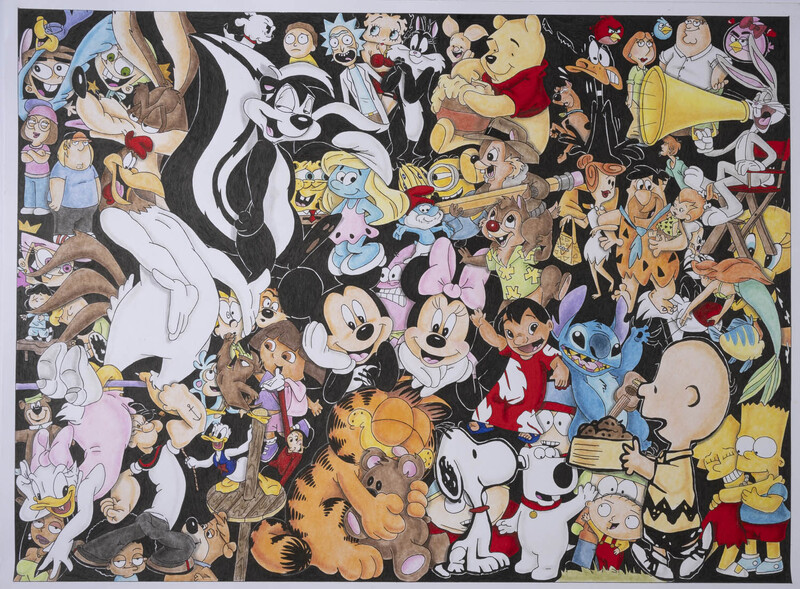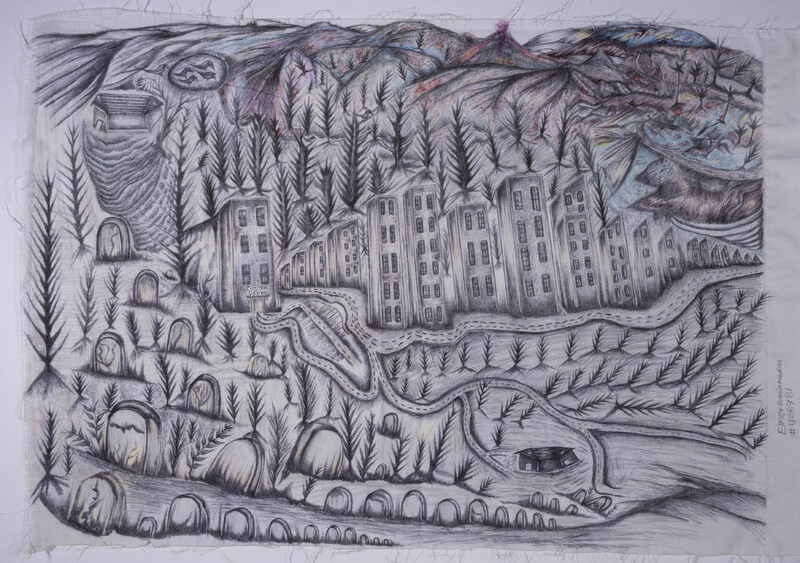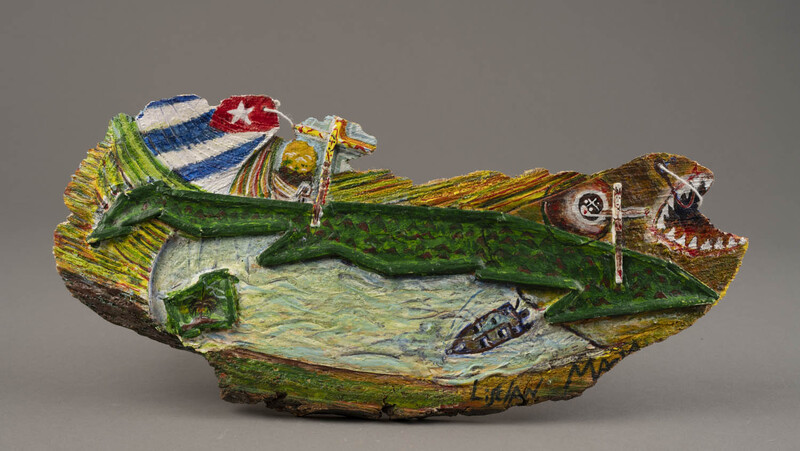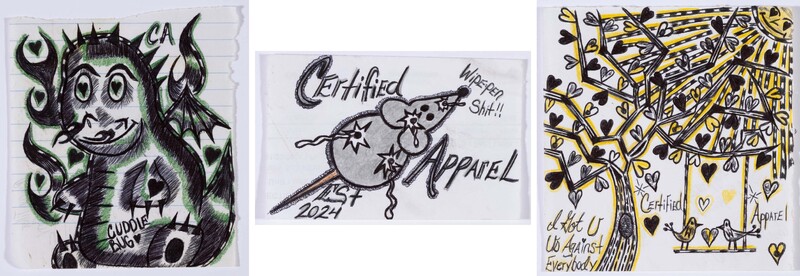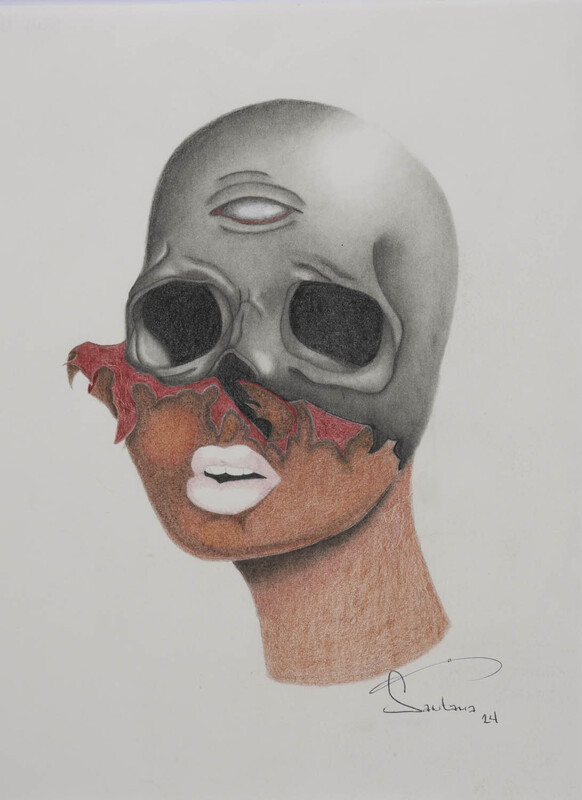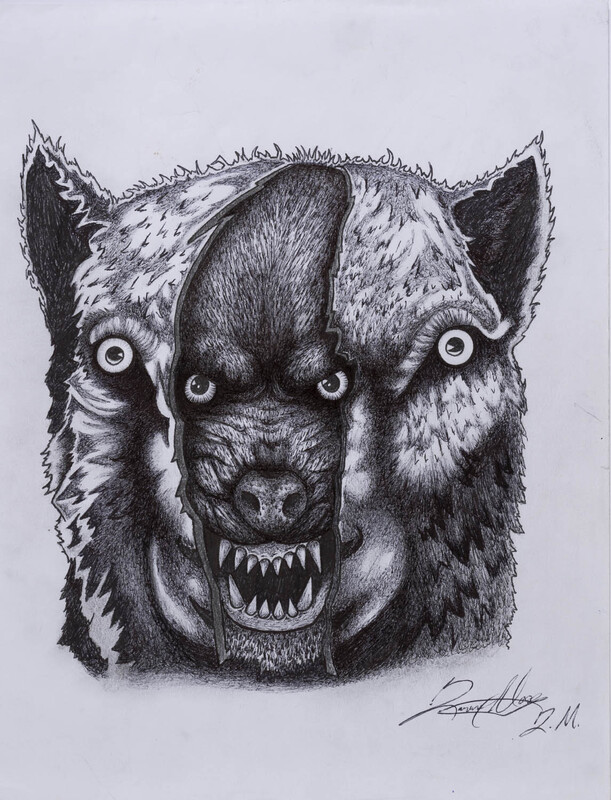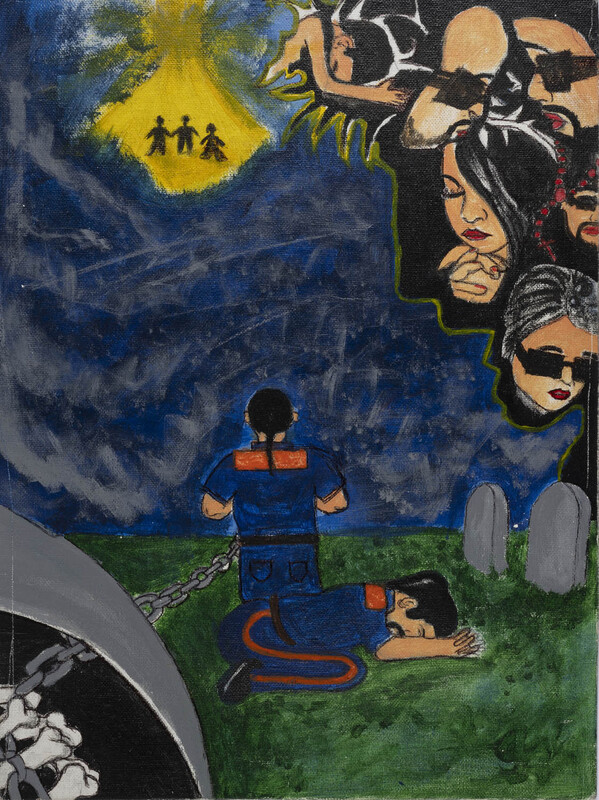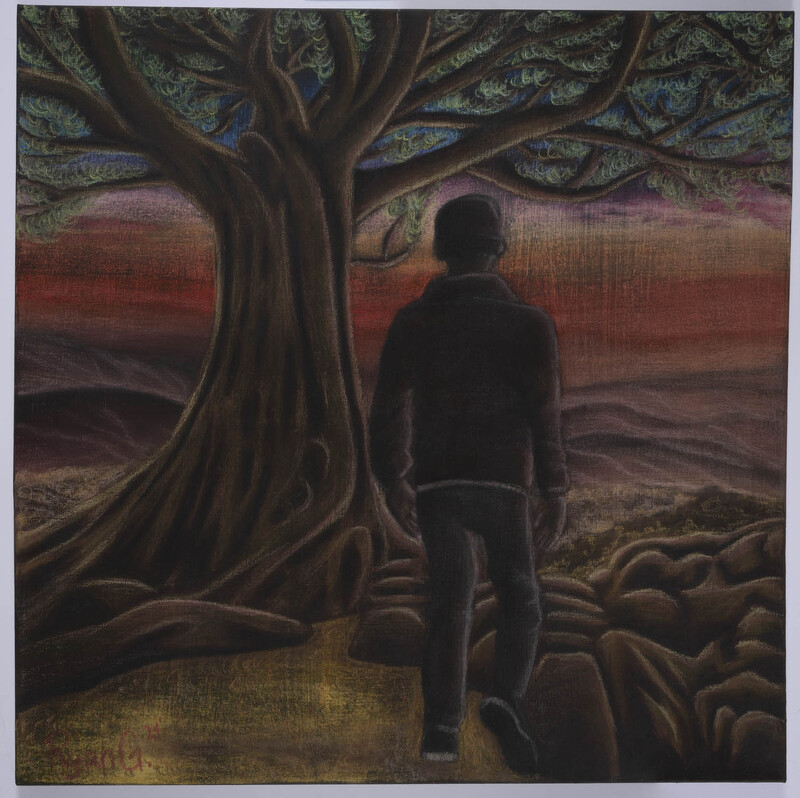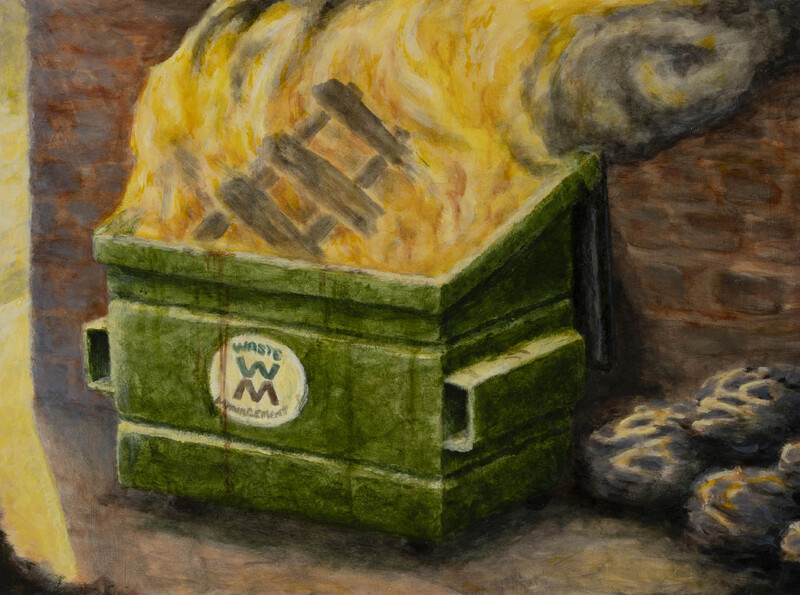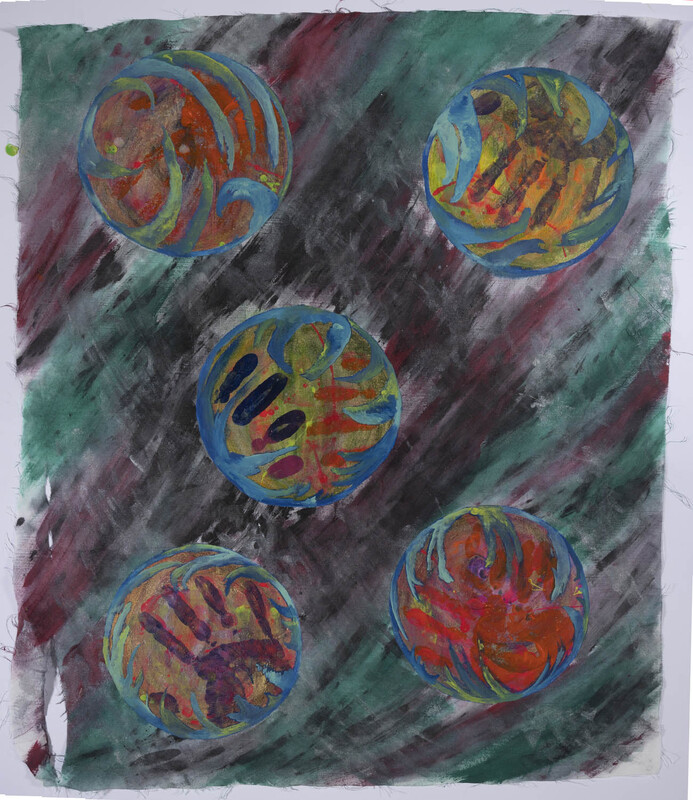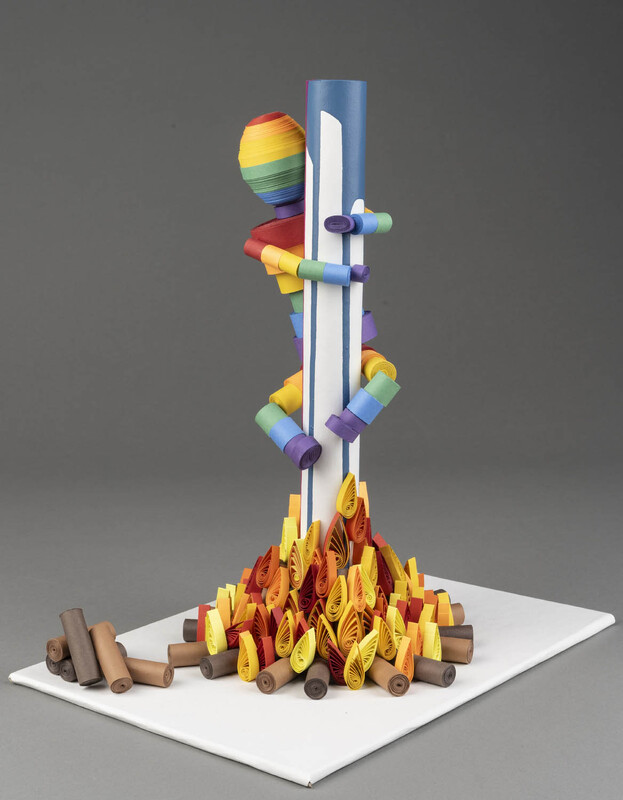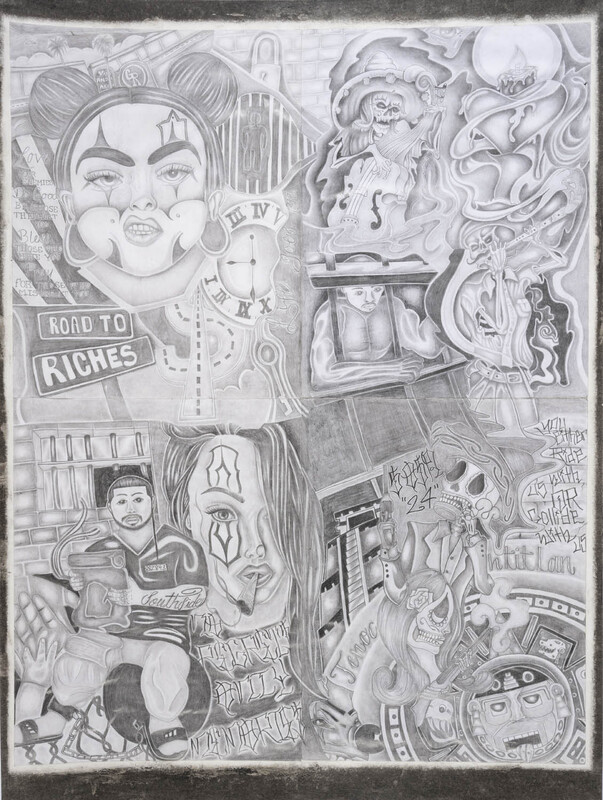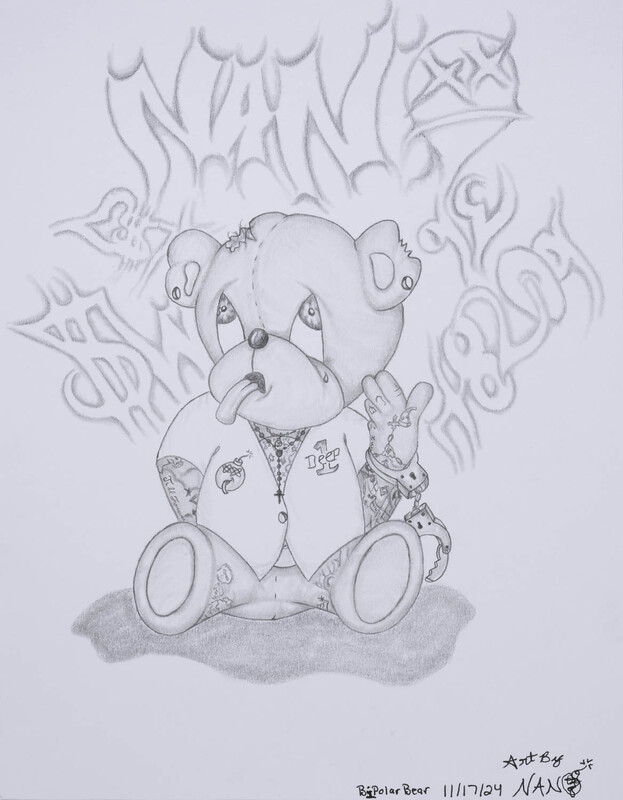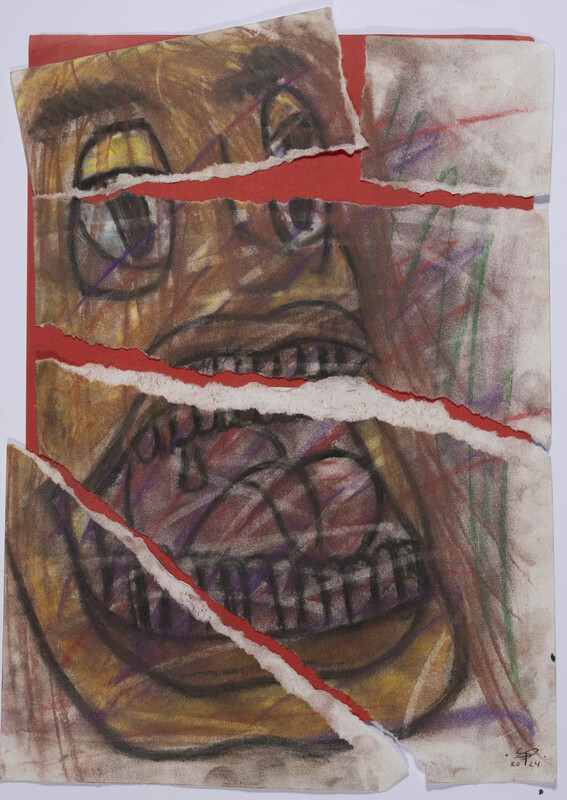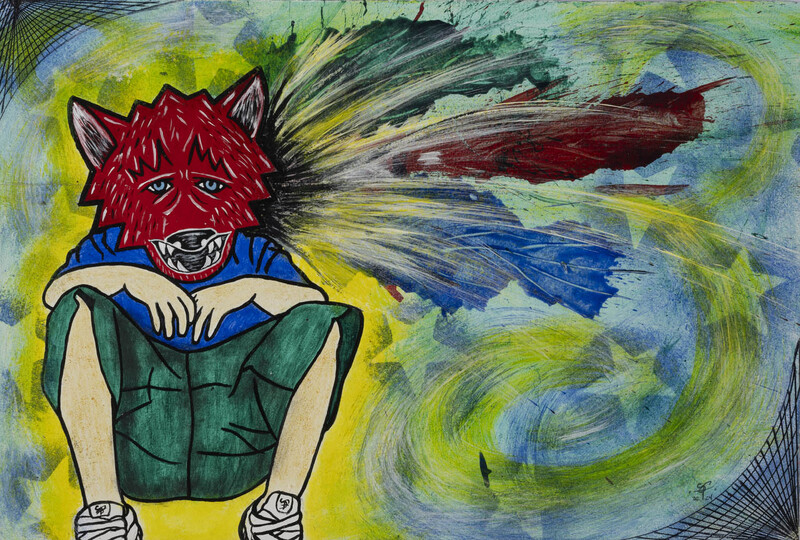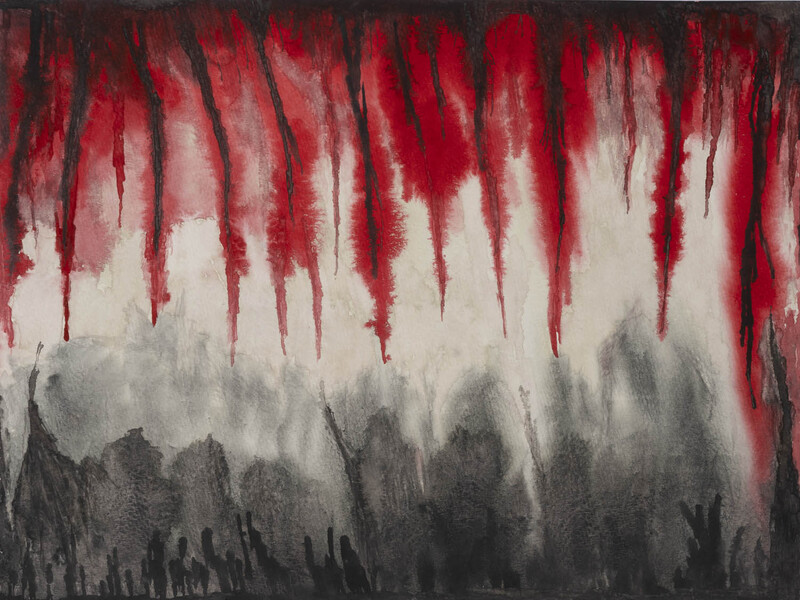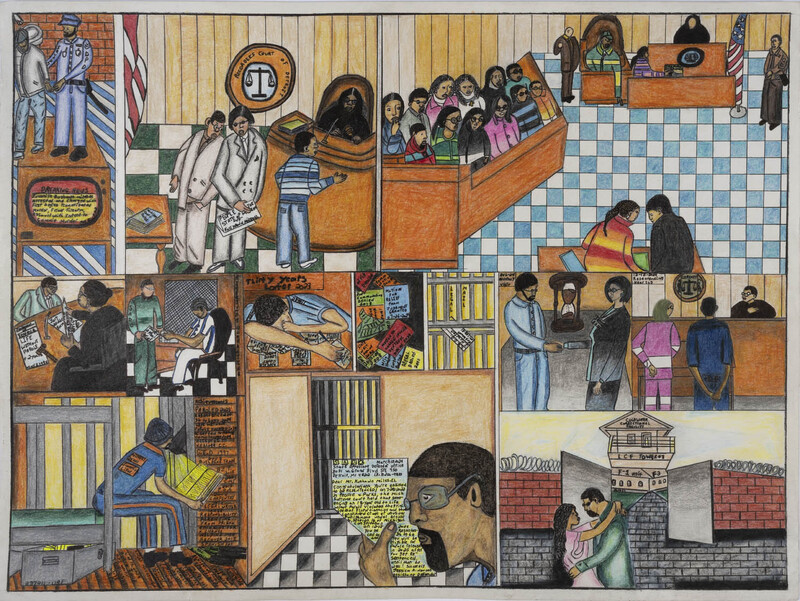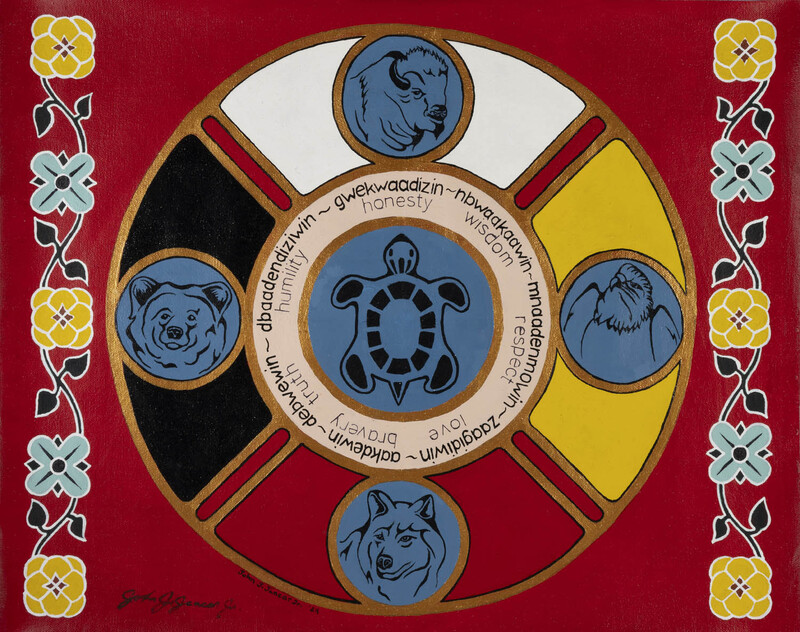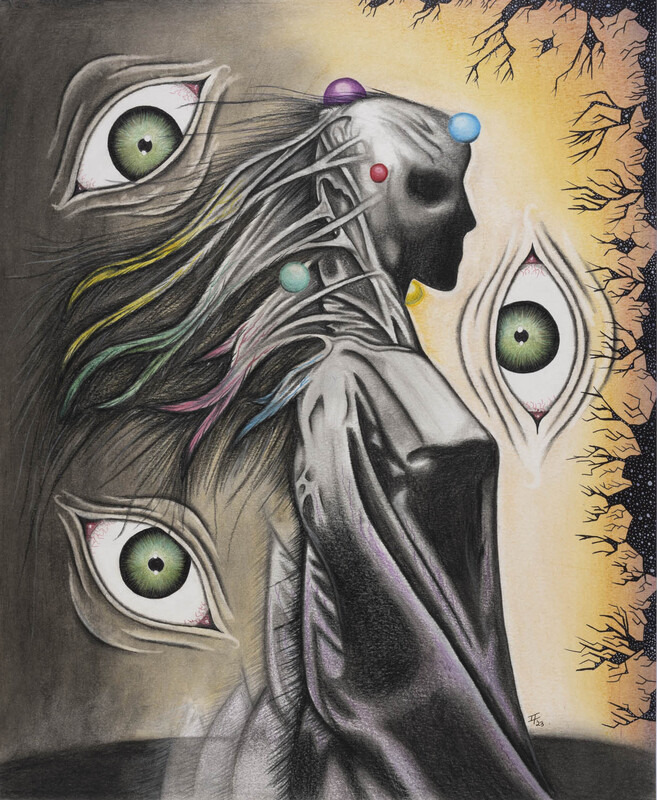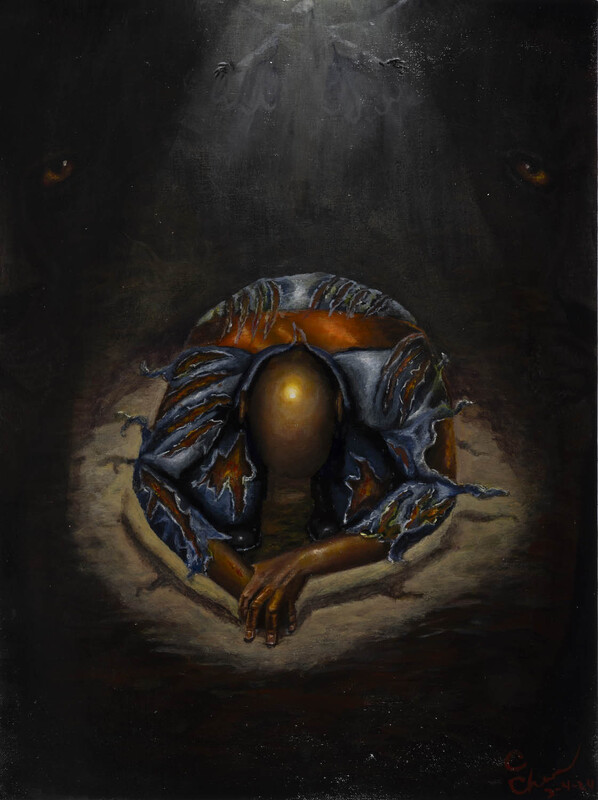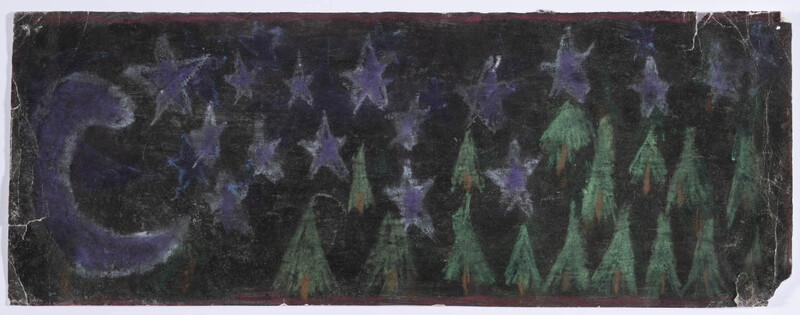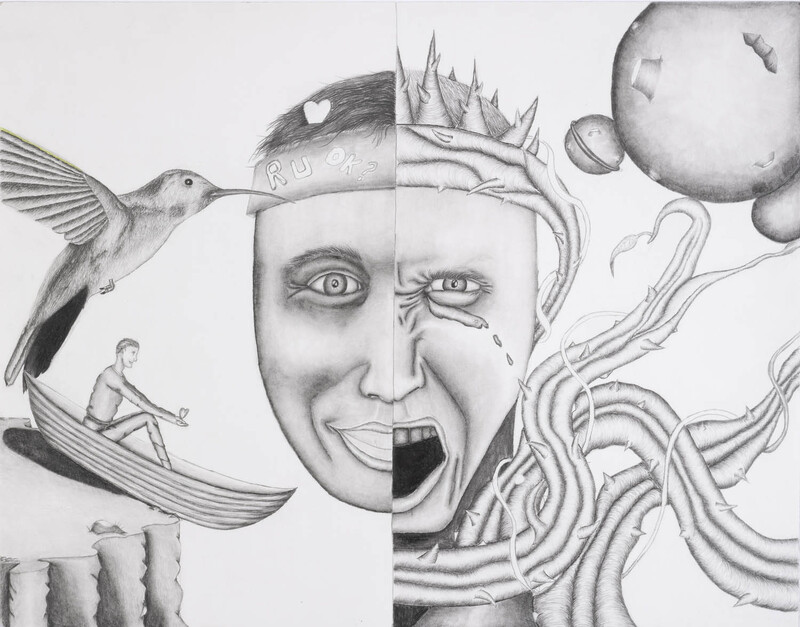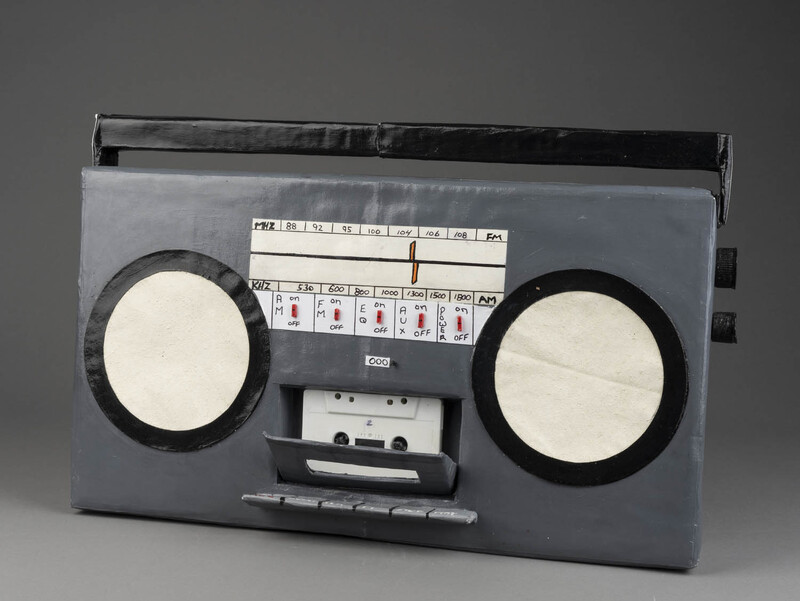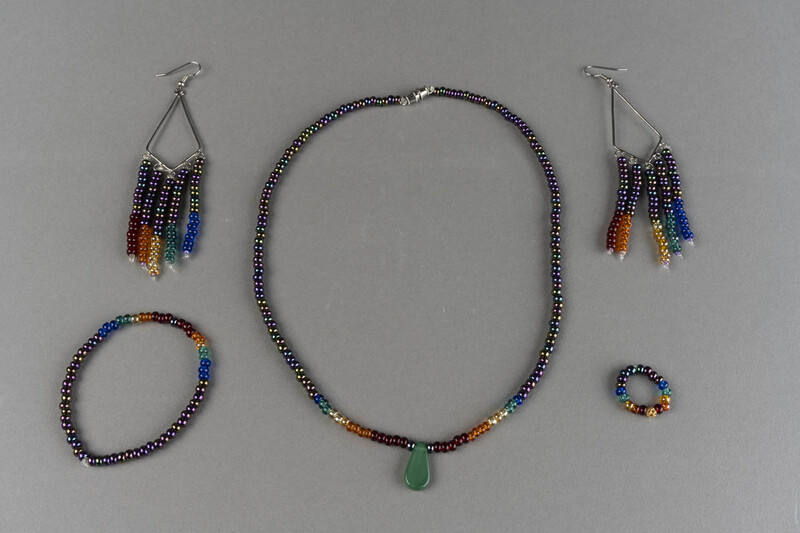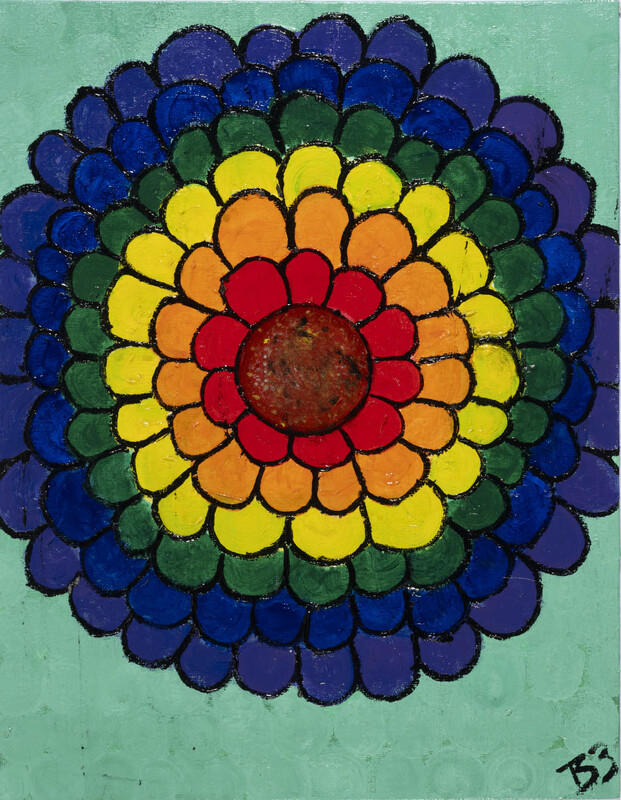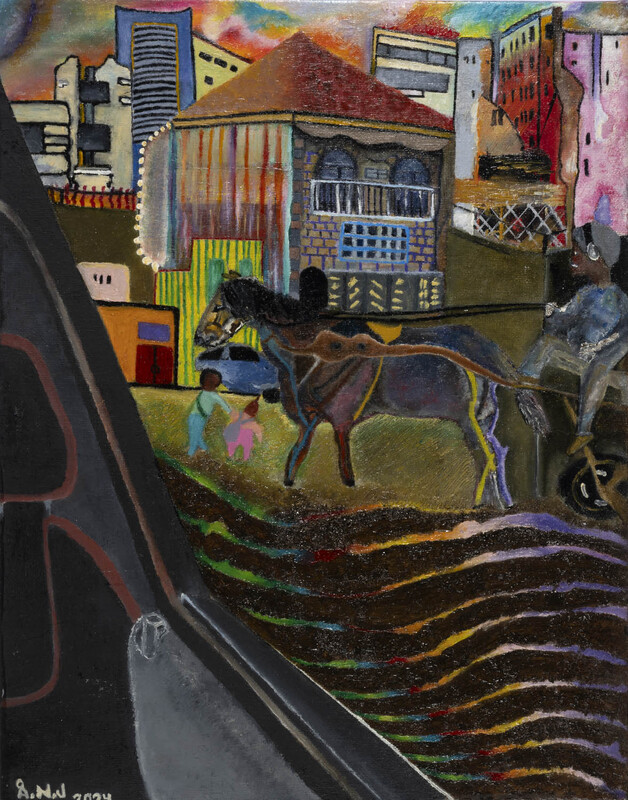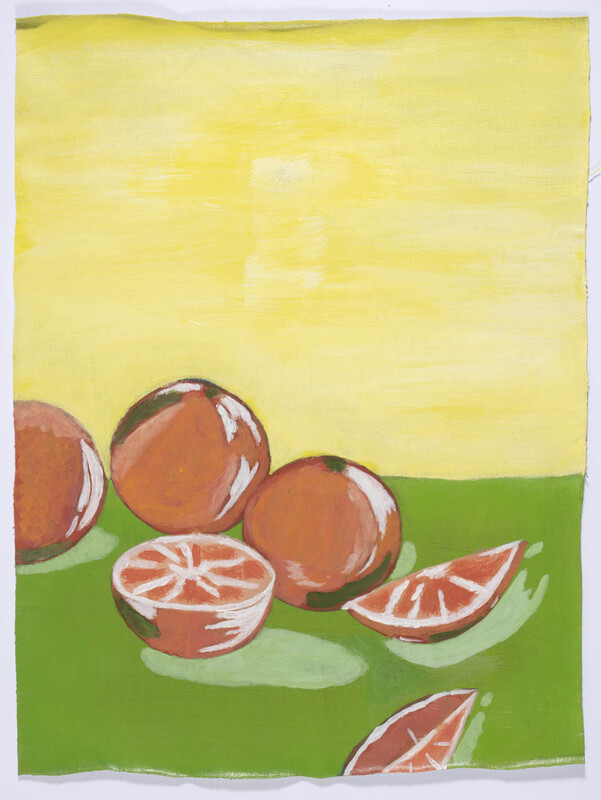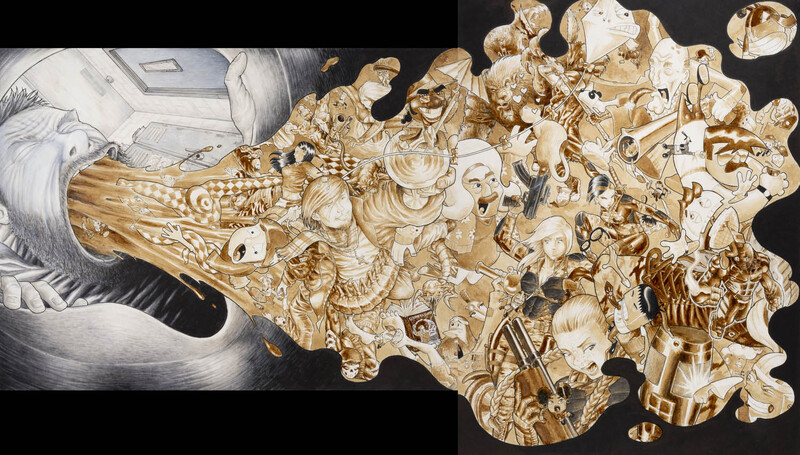Self
The ability to tell our own story is a profound human impulse. For many incarcerated artists, the criminal legal system has imposed its own version of their story, one that has the potential to drown out all other experiences and complexities of their lives. The system often portrays incarcerated people as caricatures of themselves and reduces their nuanced histories to their worst days. Prisons encourage us to forget that incarcerated people have lives and experiences that are just as complex and meaningful as ours in the free world. Art has the potential to return nuance, complexity, and autonomy to the self.
The artwork featured here demonstrates how artists may reclaim the agency to tell their own stories through art. In a setting where incarcerated artists have few choices and little authority, the power to create is deeply meaningful and inherently political. Some artists use their art to express complex and challenging inner emotions, such as Angry and Torn, by RedWolf. Others reflect on the path that has brought them to prison and consider what may lie ahead, as in Kushawn Miles-El’s Inside the Journel of a Juvenile life to Redemption. Artists may use the canvas to proudly claim their identity, like Thomas Sells’s Young Pride Blossoming. Still others may ruminate on their potential for change and growth, such as Untitled & Unfinished, by Harrison Rader.
What all of these pieces have in common is that they demonstrate that the artist’s story is theirs and theirs alone to tell. These artists demonstrate an intimate relationship with their own senses of self that suggests careful introspection. In creating these pieces, they reclaim the authority to define who they are and who they might become.
By: Nora Krinitsky


